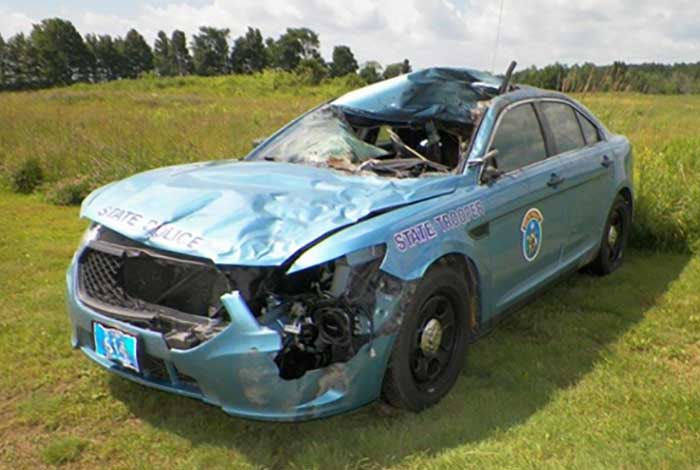One of the most important driving safety tips is to never swerve if an animal jumps in front of your car. Dog, cat, deer, raccoon -- don't swerve. Although it's an extremely natural instinct, it's also a potentially deadly one. If you swerve, you could hit a tree or an oncoming vehicle. That's worse than hitting the animal.
But there's one exception to this general rule: Moose. If a moose steps in your path, you might want to swerve.
Moose are absolutely massive. The eastern moose, for instance, which lives in New England, can weigh more than 1,300 pounds and reach a shoulder height greater than 6 feet. When a car hits a moose, it is likely to strike the animal in the legs, causing its enormous body to crash onto the roof or into the windshield. Obviously, this is very dangerous.
A new study wanted to find out just how dangerous it is. Published in the Journal of American College of Surgeons, the authors examined 7,035 moose-vehicle collisions in the state of Maine from 2003 to 2017. Of these, 26 (0.37%) resulted in at least one human fatality. By comparison, 50,281 deer-vehicle collisions occurred during the same period, only 10 (0.02%) of which resulted in at least one human fatality.
Plugging their data into a logistic regression model and controlling for variables related to vehicle speed, the authors concluded that hitting a moose was 13 times more likely to result in the death of an occupant in the vehicle than hitting a deer. The photo below shows what a moose did to a police car.

Credit: American College of Surgeons/Maine State Police
Hokey Smoke, Bullwinkle!
An interesting, but statistically insignificant finding, was that people who drove Swedish-made vehicles suffered zero fatal crashes with moose. (This is because only 158 Swedish-made vehicles were involved in moose-vehicle crashes in their data set.) This should be examined further, since Swedish-made vehicles are designed to withstand moose collisions.
Also, most collisions with moose occur in spring and summer evenings after sunset, so be especially careful on your summer vacation if you're in moose country. Your life (and Bullwinkle's life) may depend on it.
Source: David E Clark, Gwendolyn Fulton, Julianne B Ontengco, Tammy Lachance, John E Sutton Jr. "Moose-Motor Vehicle Collisions: A Continuing Hazard in Northern New England." Journal of American College of Surgeons. Article in press. DOI: 10.1016/j.jamcollsurg.2018.12.041




